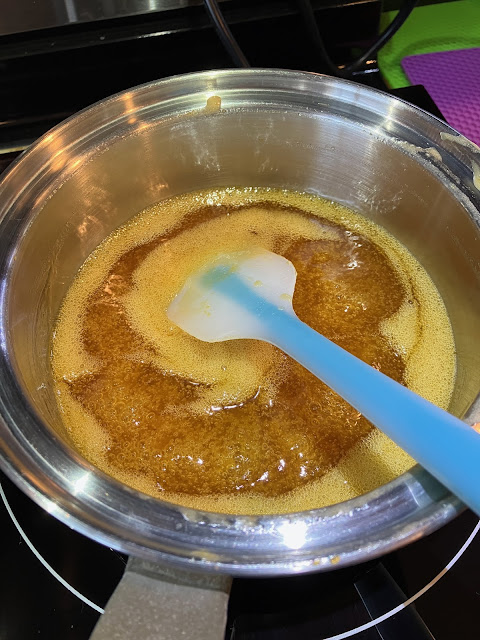Back in 2020 when the world ended, I needed to get the oil changed on my bikes. Most of them, at least. I had decided when I bought Gregg that I would do all the maintenance myself, but I had been using the dealer to change the oil on Orthrus, Rabbit Season and Scooty-Puff.
Conveniently, due to the world ending, BMW decided to pay for pick-up/drop-off service and so I made use of that to get all three of my BMWs picked up from my door, the oil changed, and then dropped back off and the experience was a delight... though still rather expensive, given the shop rates around here.
Then a year later in 2021 the bikes needed another change of oil. Well, "needed" in a broad sense, in that they'd gone a year since their last oil change. Did they really need it? Maybe not so much, given I hadn't put that many miles on them.
But since the last oil change had gone so smoothly, I decided to call up the dealer again to take advantage of their lovely pick-up/drop-off service... only to find that they had discontinued it. I had to bring the bikes in myself, which was very lame as it meant making multiple trips to pick them up and drop them off, on top of paying through the nose for the local shop rates.
Well, 2022 came around and I decided I'd had enough. I wasn't putting enough miles on the bikes for an annual oil change to make sense, so I just kept riding them. Then 2023 came around and I figured that 2 years was probably kind of pushing it so I really should change the oil on them, which mostly resulted in me not getting around to it, and basically just not doing any motorcycle riding that year.
However, by August or so I finally decided to get off my butt and at least go buy the supplies so I'd be one step closer to having the job done. Those supplies then sat around in my car hole for about 9 months but now, finally, I have put them to use.
The first bike to get a change would be Gregg. It was a familiar beast by now, as I'd been taking care of this task from new, and so it would be a good candidate to refresh my memory on all the ins and outs. Not that there's many, really.
Things went smoothly, other than spilling a little bit of oil on the floor of my car hole when I made a bit too eager use of my air ratchet. Surprisingly, it blows air out the end when you use it, and that air tends to blow oil all over the place when there's a drain pan full of it just below the wrench. Who could have predicted it?
Anyway, other than that little hiccup the procedure went smoothly.
Next to get a change would be Scooty-Puff. This one was a bit trickier because I had to remove a few body panels to even get to the parts of the engine where the oil lives, but other than that things were mostly just like any other bike.
Except when I got to the oil filter. You see, way back when I did the first oil change on Gregg, I picked up a set of oil filter sockets that fit over the end of the filter and allow you to use a 3/8" ratchet to remove or install them. This is handy when the wrench-apes down at the local service center decide to spin the filters on with full-gronk rather than tightening them down to the appropriate, quite low, torque spec.
But for whatever reason, instead of using a design with 14, 15 or 16 flats on it that my universal oil filter socket set would fit on, it instead used a series of 12 flutes, which required a completely different socket.
Well, I didn't have that socket, but thankfully the wrench-apes who had done the last service hadn't gone full-gronk on the filter so with the help of some rubber-coated gloves for extra grip I was able to spin the filter off by hand. Phew. Crisis averted.
But that wasn't the only peculiarity. You see, Scooty-Puff, being a scooter, has a very low-slung engine. To achieve this, they use what is essentially a dry-sump system, where the oil reservoir is split into two separate chambers instead of all just hanging out below the engine in an oil pan. This resulted in some confusion when I went to fill the oil back up, as pouring in the specified amount of oil resulted in the oil level reaching right up to the brim of the dipstick hole, which looked an awful lot like it was dramatically overfilled.
However, I knew that this oil level would go down a little bit when the oil circulated through the engine, and particularly when it filled up the oil filter, so I reached over to turn the bike on and crank the engine.
That's when I remembered, shortly after hitting the starter, that the pistons would displace about 650cc of air in the crank case, which would then eject 650cc of oil out the dipstick hole, since I had neglected to screw the dipstick back in.
Whoops.
On the bright side, this turned out to be the perfect opportunity to learn about diatomaceous earth oil absorbent which is really a miracle product. I had always assumed that oil absorbents would soak up the bulk of an oil spill, but would probably fight with the concrete's own capillary action and be unable to clear out the shiny spot that usually remains after wiping up some spilled oil. Well, little did I know that some wizards have enchanted this kitty litter to somehow suck the oil right up out of the concrete, and as a result it leaves a perfectly dry, clean spot where the oil once was. Fascinating.
Anyway, that turned out to be enough excitement for one weekend. I took Gregg out for a little test ride, which I covered in a previous post, and called it good.
But I still had two bikes left to go, so today the first patient on the bench would be Rabbit Season.
Now luckily, after running into issues with the oil filter on Scooty-Puff, I had thought ahead to check the filter on Rabbit Season. It had the usual flats rather than weird fluted notches, and there were 14 of them, just like the filter on Gregg. However, it was 74mm, which was slightly larger than Gregg's filter, but no worries: I had a whole set of oil filter sockets. So I grabbed the next size up, which included a 74mm size and... it was 15 flats, not 14.
So it was a good thing I checked, as I was able to order two sockets rather than just one, and it arrived in time for the oil changes this weekend.
Anyway, other than having to hose off a bit of rat poop from the bike, the oil change went very smoothly. Also you'll be thrilled to know, I'm sure, that the rat who left that poop is no longer among the living, having snacked on some of the rat poison that I had set out especially for them to dine on.
With that out of the way, I only had one bike left to do: Orthrus.
Draining the oil from Orthrus went quite smoothly, but when I got to the filter things took a bit of a turn. On the R65, the oil filter isn't the usual modern spin-on type, but is rather a filter element that slides into the side of the oil pan through a little access plug in the right-hand side. There's nothing wrong with that, it just means pulling out 3 bolts and removing the plug instead of unscrewing one filter.
However when I pulled the plug off the oil pan, I noticed that the gasket had been buttered up with a grey sealant, no doubt in an effort to avert any potential future oil seepage. I found that kind of curious.
But then I also noticed that the large white o-ring, which provides the primary seal for the plug, had been crushed clean in half, due to it having slipped out of place during installation. Yes, I think there's little doubt in my mind why that particular wrench-ape had so many poor experiences with oil seeping out of gaskets. Needless to say, I was not impressed.
Anyway, I scraped off the remains of the gasket sealant and cleaned up the chunks of sheared o-ring (and luckily the gasket kit came with a new o-ring, shim and gasket), changed out the filter element, and finished off the oil change with no more major incidents.
Finally I tidied up the tools, took Rabbit Season out for a little test ride, and called it a job well done.









































